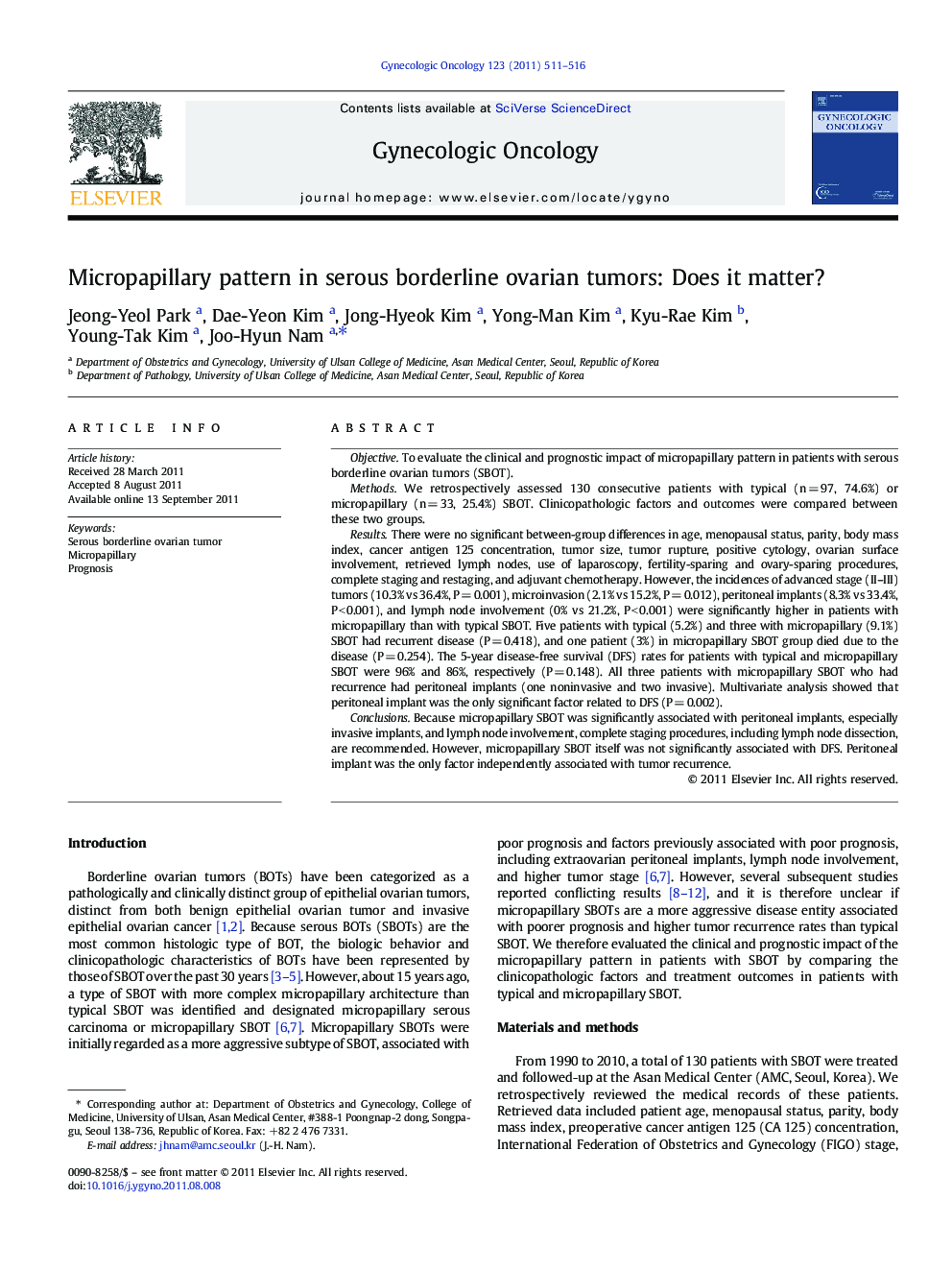| کد مقاله | کد نشریه | سال انتشار | مقاله انگلیسی | نسخه تمام متن |
|---|---|---|---|---|
| 3945352 | 1254262 | 2011 | 6 صفحه PDF | دانلود رایگان |

ObjectiveTo evaluate the clinical and prognostic impact of micropapillary pattern in patients with serous borderline ovarian tumors (SBOT).MethodsWe retrospectively assessed 130 consecutive patients with typical (n = 97, 74.6%) or micropapillary (n = 33, 25.4%) SBOT. Clinicopathologic factors and outcomes were compared between these two groups.ResultsThere were no significant between-group differences in age, menopausal status, parity, body mass index, cancer antigen 125 concentration, tumor size, tumor rupture, positive cytology, ovarian surface involvement, retrieved lymph nodes, use of laparoscopy, fertility-sparing and ovary-sparing procedures, complete staging and restaging, and adjuvant chemotherapy. However, the incidences of advanced stage (II–III) tumors (10.3% vs 36.4%, P = 0.001), microinvasion (2.1% vs 15.2%, P = 0.012), peritoneal implants (8.3% vs 33.4%, P < 0.001), and lymph node involvement (0% vs 21.2%, P < 0.001) were significantly higher in patients with micropapillary than with typical SBOT. Five patients with typical (5.2%) and three with micropapillary (9.1%) SBOT had recurrent disease (P = 0.418), and one patient (3%) in micropapillary SBOT group died due to the disease (P = 0.254). The 5-year disease-free survival (DFS) rates for patients with typical and micropapillary SBOT were 96% and 86%, respectively (P = 0.148). All three patients with micropapillary SBOT who had recurrence had peritoneal implants (one noninvasive and two invasive). Multivariate analysis showed that peritoneal implant was the only significant factor related to DFS (P = 0.002).ConclusionsBecause micropapillary SBOT was significantly associated with peritoneal implants, especially invasive implants, and lymph node involvement, complete staging procedures, including lymph node dissection, are recommended. However, micropapillary SBOT itself was not significantly associated with DFS. Peritoneal implant was the only factor independently associated with tumor recurrence.
► Micropapillary pattern is associated with peritoneal implants and lymph node involvement.
► Complete staging including lymph node dissection is recommended.
► Miropapillary pattern is not associated with increased recurrence.
Journal: Gynecologic Oncology - Volume 123, Issue 3, December 2011, Pages 511–516